Abstract
Previous reports from our laboratory described the detection of a suppressor factor which inhibited the phagocytic activity of a macrophage subset in murine cryptococcosis and in classical models of immune tolerance. The suppressor factor was originally named PIL (phagocytosis-inhibiting lymphokine) but has recently been renamed TsFmp (T suppressor factor for macrophage phagocytosis) because it was found to resemble the antigen-specific I-J-restricted suppressor factors described by others. The current investigation revealed that TsFmp acted rapidly upon the macrophage (15 min or less) to exert its effect of inhibiting the phagocytic process. The time for the macrophage to recover from the effects of TsFmp was likewise very rapid. The ability of TsFmp to inhibit phagocytosis was limited to engulfment of particles by Fc and mannan receptors and did not extent to phagocytosis via complement receptors or by nonspecific mechanisms. The macrophage subset that responded to TsFmp was determined to be in the I-A+ and I-J-IM+ subset.
Full text
PDF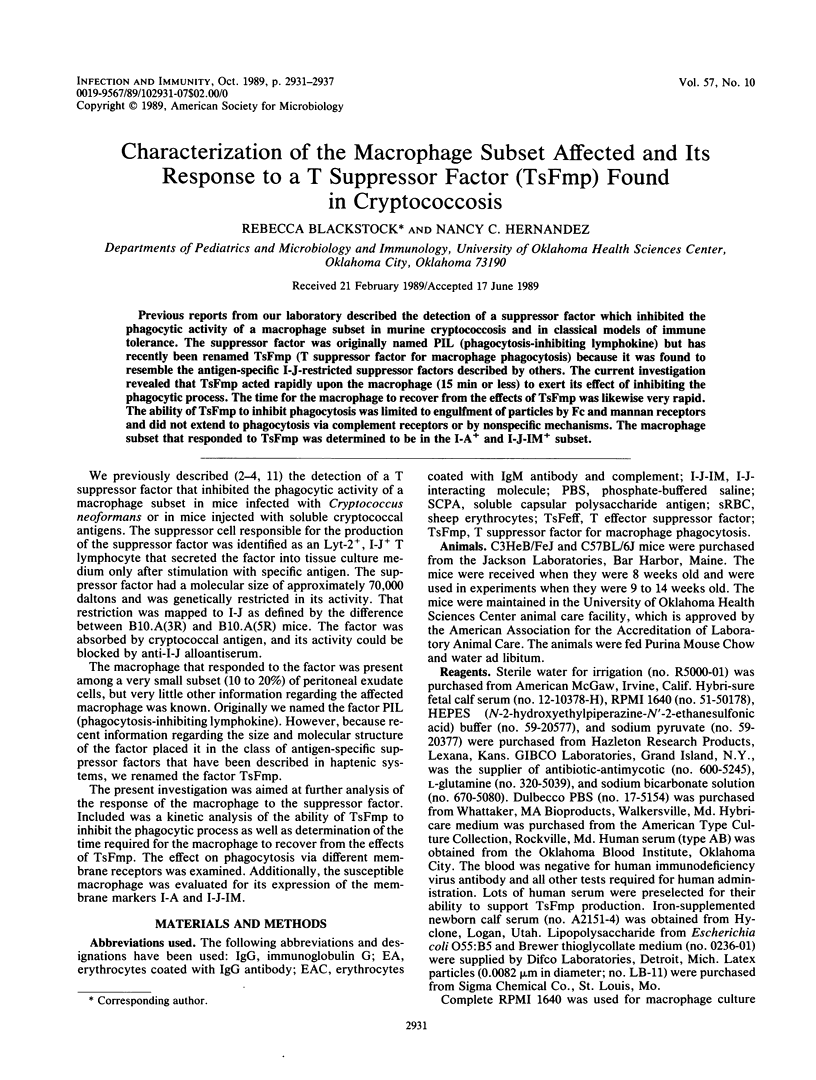
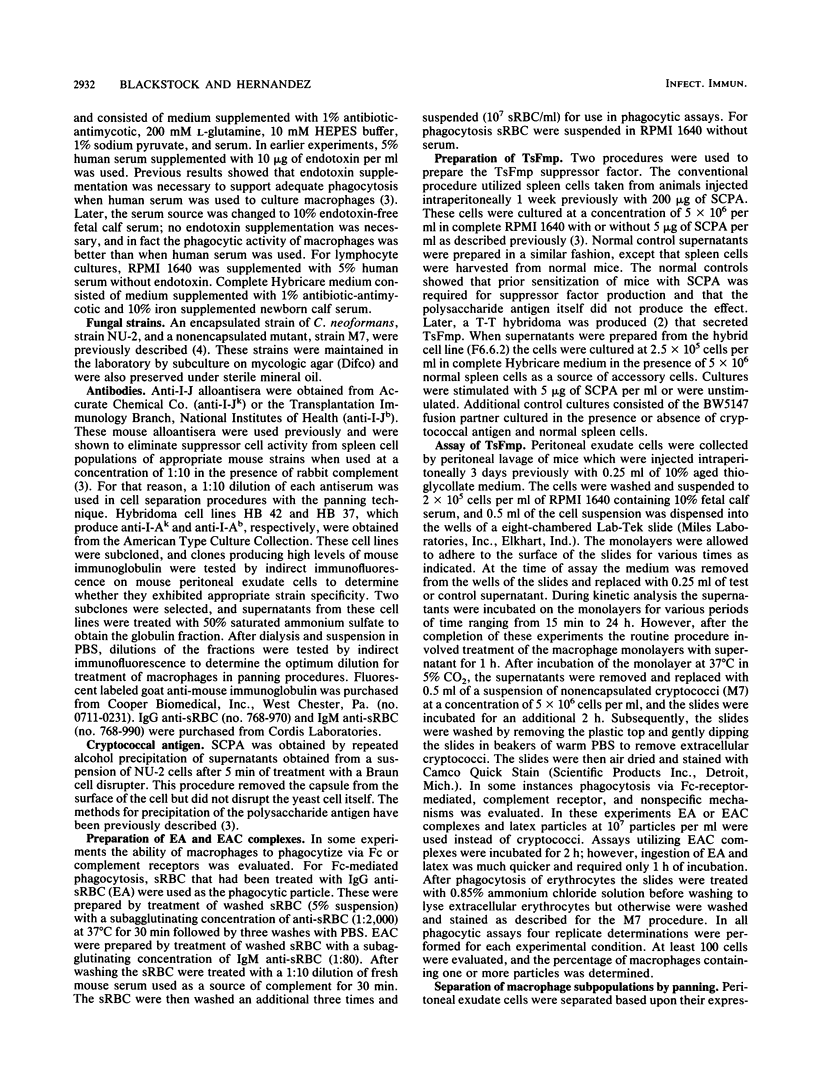
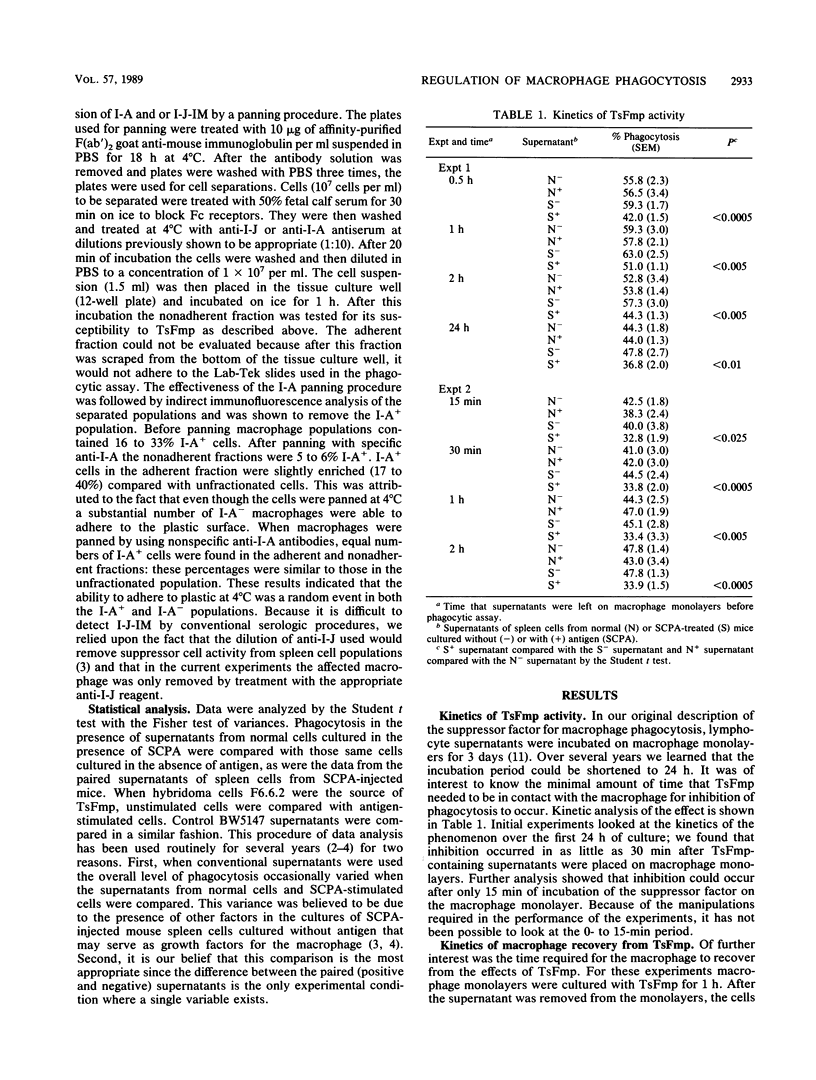
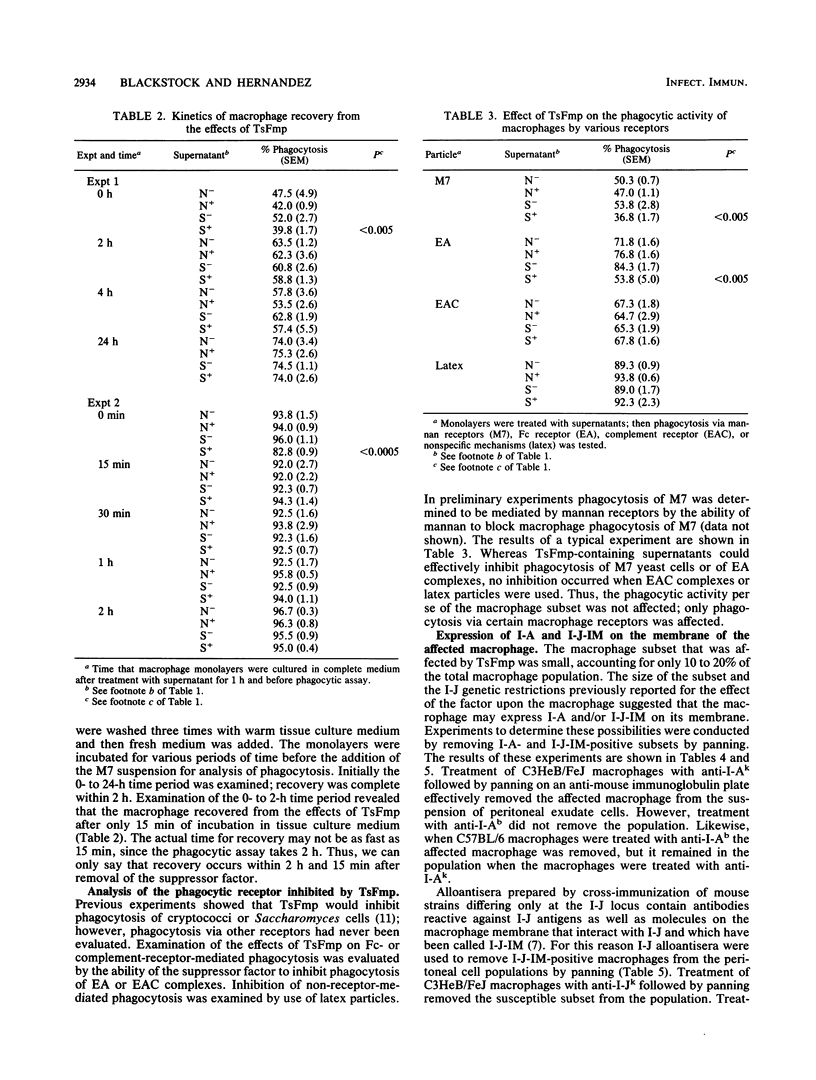
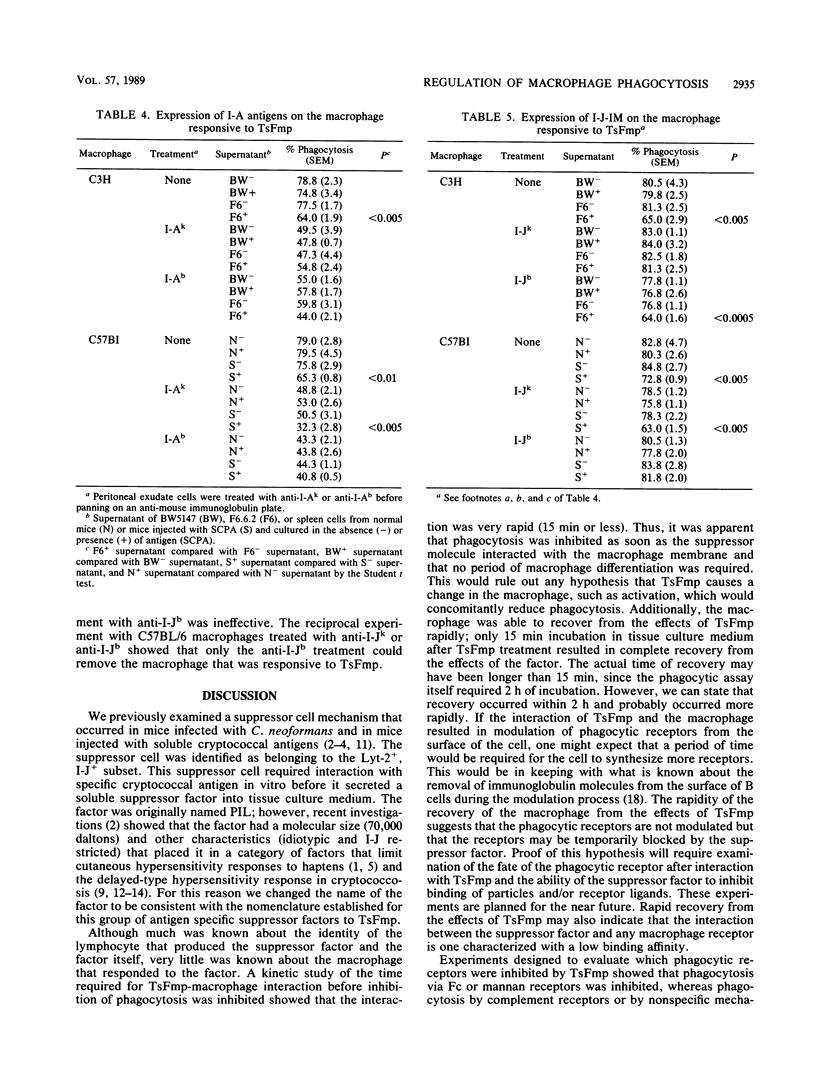
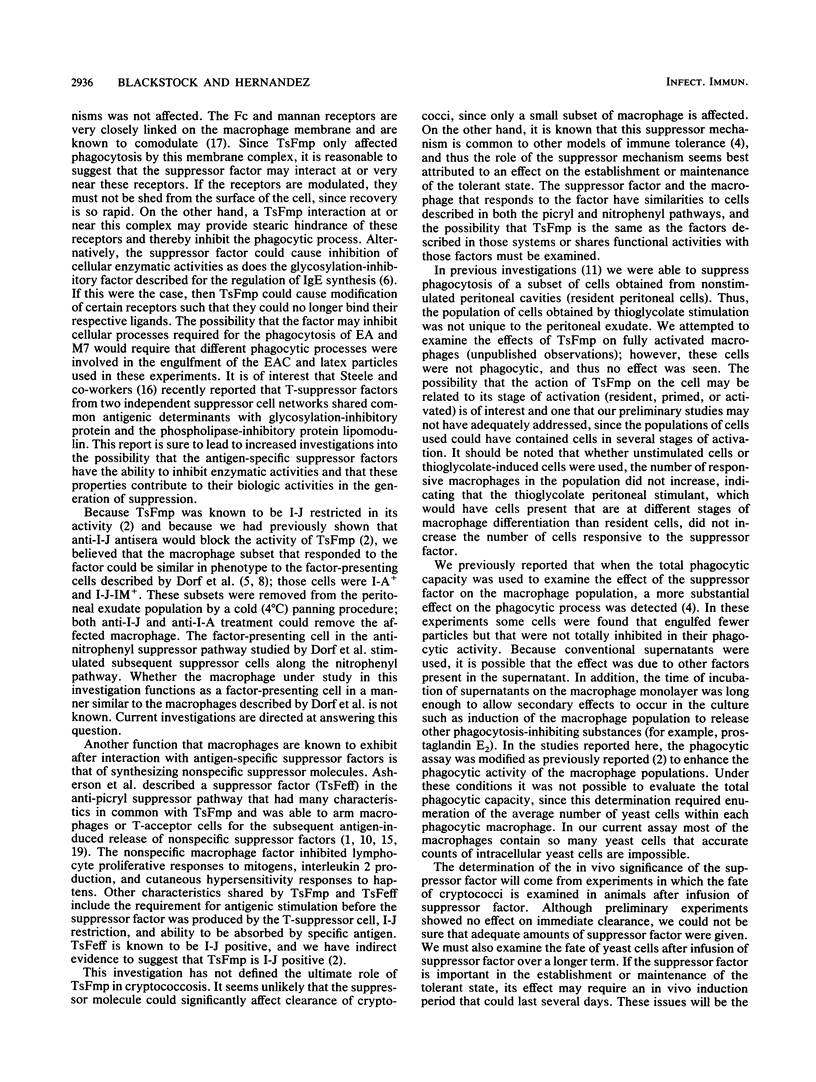
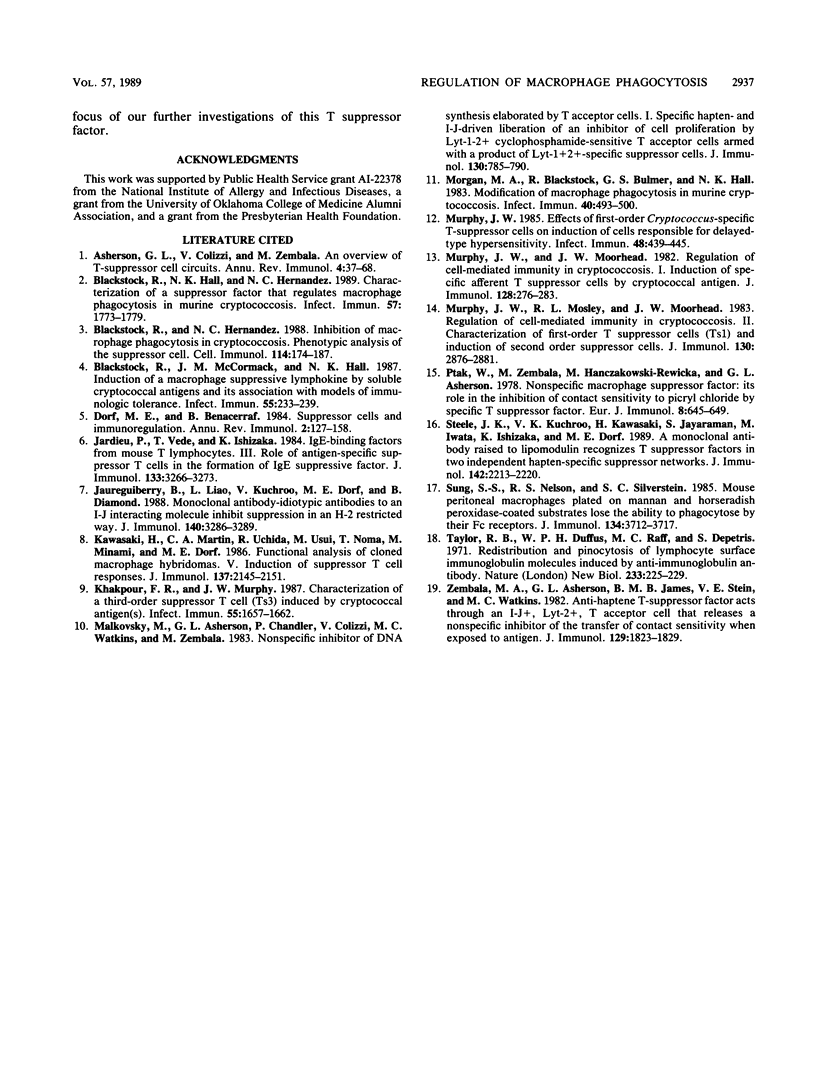
Selected References
These references are in PubMed. This may not be the complete list of references from this article.
- Blackstock R., Hall N. K., Hernandez N. C. Characterization of a suppressor factor that regulates phagocytosis by macrophages in murine cryptococcosis. Infect Immun. 1989 Jun;57(6):1773–1779. doi: 10.1128/iai.57.6.1773-1779.1989. [DOI] [PMC free article] [PubMed] [Google Scholar]
- Blackstock R., Hernandez N. C. Inhibition of macrophage phagocytosis in cryptococcosis: phenotypic analysis of the suppressor cell. Cell Immunol. 1988 Jun;114(1):174–187. doi: 10.1016/0008-8749(88)90264-x. [DOI] [PubMed] [Google Scholar]
- Blackstock R., McCormack J. M., Hall N. K. Induction of a macrophage-suppressive lymphokine by soluble cryptococcal antigens and its association with models of immunologic tolerance. Infect Immun. 1987 Jan;55(1):233–239. doi: 10.1128/iai.55.1.233-239.1987. [DOI] [PMC free article] [PubMed] [Google Scholar]
- Dorf M. E., Benacerraf B. Suppressor cells and immunoregulation. Annu Rev Immunol. 1984;2:127–157. doi: 10.1146/annurev.iy.02.040184.001015. [DOI] [PubMed] [Google Scholar]
- Jardieu P., Uede T., Ishizaka K. IgE-binding factors from mouse T lymphocytes. III. Role of antigen-specific suppressor T cells in the formation of IgE-suppressive factor. J Immunol. 1984 Dec;133(6):3266–3273. [PubMed] [Google Scholar]
- Jaureguiberry B., Liao L., Kuchroo V., Dorf M. E., Diamond B. Monoclonal anti-idiotypic antibodies to an I-J interacting molecule inhibit suppression in an H-2 restricted way. J Immunol. 1988 May 15;140(10):3286–3289. [PubMed] [Google Scholar]
- Kawasaki H., Martin C. A., Uchida T., Usui M., Noma T., Minami M., Dorf M. E. Functional analysis of cloned macrophage hybridomas. V. Induction of suppressor T cell responses. J Immunol. 1986 Oct 1;137(7):2145–2151. [PubMed] [Google Scholar]
- Khakpour F. R., Murphy J. W. Characterization of a third-order suppressor T cell (Ts3) induced by cryptococcal antigen(s). Infect Immun. 1987 Jul;55(7):1657–1662. doi: 10.1128/iai.55.7.1657-1662.1987. [DOI] [PMC free article] [PubMed] [Google Scholar]
- Malkovský M., Asherson G. L., Chandler P., Colizzi V., Watkins M. C., Zembala M. Nonspecific inhibitor of DNA synthesis elaborated by T acceptor cells. I. Specific hapten- and I-J-driven liberation of an inhibitor of cell proliferation by Lyt-1-2+ cyclophosphamide-sensitive T acceptor cells armed with a product of Lyt-1+2+-specific suppressor cells. J Immunol. 1983 Feb;130(2):785–790. [PubMed] [Google Scholar]
- Morgan M. A., Blackstock R. A., Bulmer G. S., Hall N. K. Modification of macrophage phagocytosis in murine cryptococcosis. Infect Immun. 1983 May;40(2):493–500. doi: 10.1128/iai.40.2.493-500.1983. [DOI] [PMC free article] [PubMed] [Google Scholar]
- Murphy J. W. Effects of first-order Cryptococcus-specific T-suppressor cells on induction of cells responsible for delayed-type hypersensitivity. Infect Immun. 1985 May;48(2):439–445. doi: 10.1128/iai.48.2.439-445.1985. [DOI] [PMC free article] [PubMed] [Google Scholar]
- Murphy J. W., Moorhead J. W. Regulation of cell-mediated immunity in cryptococcosis. I. Induction of specific afferent T suppressor cells by cryptococcal antigen. J Immunol. 1982 Jan;128(1):276–283. [PubMed] [Google Scholar]
- Murphy J. W., Mosley R. L., Moorhead J. W. Regulation of cell-mediated immunity in cryptococcosis. II. Characterization of first-order T suppressor cells (Ts1) and induction of second-order suppressor cells. J Immunol. 1983 Jun;130(6):2876–2881. [PubMed] [Google Scholar]
- Ptak W., Zembala M., Hanczakowski-Rewicka M., Asherson G. L. Nonspecific macrophage suppressor factor: its role in the inhibition of contact sensitivity to picryl chloride by specific T suppressor factor. Eur J Immunol. 1978 Sep;8(9):645–649. doi: 10.1002/eji.1830080908. [DOI] [PubMed] [Google Scholar]
- Steele J. K., Kuchroo V. K., Kawasaki H., Jayaraman S., Iwata M., Ishizaka K., Dorf M. E. A monoclonal antibody raised to lipomodulin recognizes T suppressor factors in two independent hapten-specific suppressor networks. J Immunol. 1989 Apr 1;142(7):2213–2220. [PubMed] [Google Scholar]
- Sung S. S., Nelson R. S., Silverstein S. C. Mouse peritoneal macrophages plated on mannan- and horseradish peroxidase-coated substrates lose the ability to phagocytose by their Fc receptors. J Immunol. 1985 Jun;134(6):3712–3717. [PubMed] [Google Scholar]
- Zembala M. A., Asherson G. L., James B. M., Stein V. E., Watkins M. C. Anti-haptene T suppressor factor acts through an I-J+, Ly1-2+, T acceptor cell that releases a nonspecific inhibitor of the transfer of contact sensitivity when exposed to antigen. J Immunol. 1982 Nov;129(5):1823–1829. [PubMed] [Google Scholar]


